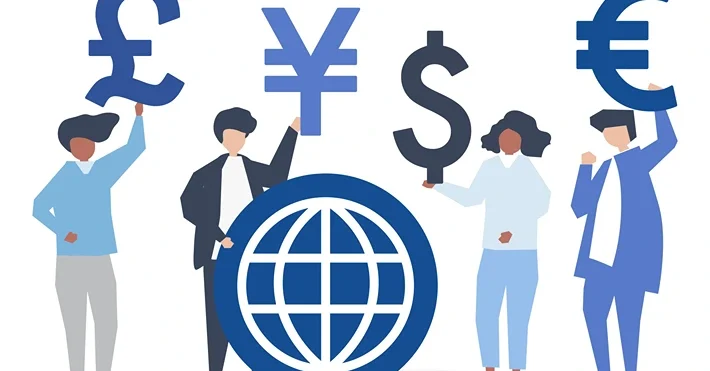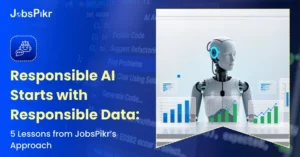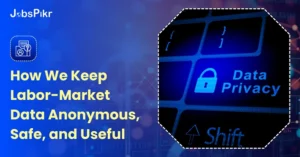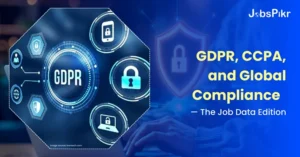- TL;DR
- What is Economic Diversity?
- Define Economic Diversity (Beyond a One-Liner)
- Economic Diversity vs “Just Many Industries”
- What are the Benefits of Economic Diversity?
- Socio-Economic Diversity Meaning (Why It Matters in the Real World)
- What is the Current US Index on Economic Diversity?
- What is the Future of Economic Diversity?
- Building Resilient Economies for Tomorrow (Playbook)
- The Case for a Truly Diverse Economy
- FAQ
TL;DR
Picture two cities. One bets everything on one industry. The other spreads its chips, manufacturing, services, logistics, startups, and trades. When the cycle turns, the first city stalls; the second keeps hiring. That’s economic diversity: a diverse economy with room for different people, roles, and ideas. The US tracks it, and higher-diversity regions usually handle shocks better and keep growing.
Economic diversity, contrary to what some may believe, is not simply a measure of the number of businesses or industries in a region. Rather, it is a term used to describe the extent to which a community’s economy consists of different types of businesses and organizations.
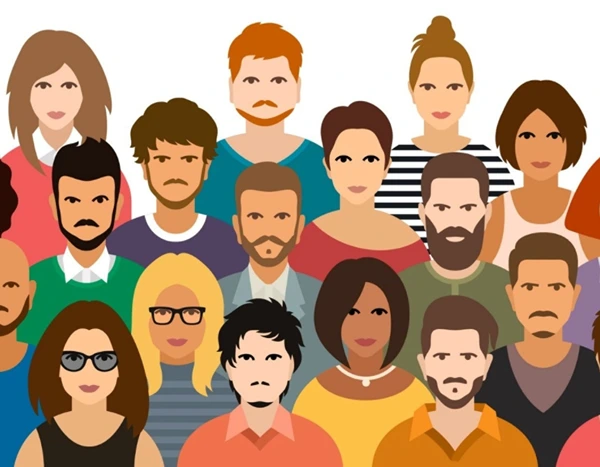
Achieving economic diversity requires deliberate planning and effort from business owners, government officials, and community leaders. By working together, they can create an environment where businesses of all sizes and types can thrive. This not only strengthens the local economy but also enhances the community’s quality of life. So, read on to learn more.
What is Economic Diversity?
Economic Diversity is a term used to describe how different groups work together in the market. A diverse economy is an economy in which different groups of people participate and interact by producing, distributing, and consuming goods and services.
The goal of economic diversity is to increase participation rates among underrepresented groups in the workforce. This goal can be achieved by providing training for new job skills, mentoring new employees, and providing equal opportunities for advancement.
This includes both social and economic aspects of society. One of the most important aspects is employment opportunities that are accessible for all people regardless of their gender, race, religion, and socio-economic background. Another aspect is wage equality which means equal pay for women and men.
Economic diversity is a practice where businesses and other employers work to create and maintain a varied economic landscape. It occurs when employers try to identify solutions for business growth, employee development, and community-building goals. What this means differs among organizations depending on their size, objectives, and resources.
Businesses that aim not to focus all of their investments in one activity or sector of the economy. Some companies might only hire employees within a certain radius. In contrast, others will do outreach programs to attract people who don’t already interested in working at their company (ex: not just people involved in STEM fields).
It is important for companies and organizations to think about economic diversity when hiring for positions that are not typically held by their demographic. Economic diversity is important because it allows a company to encourage creativity across different demographics within an organization.
Define Economic Diversity (Beyond a One-Liner)
If you need the short version, define economic diversity this way: spread risk and spread opportunity.
If you need the working version leaders can actually use, use this four-part checklist:
- Mix of sectors: At least three unrelated sectors, each contributing meaningful jobs and revenue.
- Mix of firm sizes: A few anchors, a strong mid-market, and a long tail of small businesses—each with different hiring and capital needs.
- Mix of markets: Local services, regional/national sales, and export revenue, so demand doesn’t hinge on one buyer group.
- Mix of skills: Multiple on-ramps—trades, certificates, two-year programs, universities—so residents can move into growth, not just watch it.
When those four move together, you’re building a diverse economy that bends instead of breaks.
Economic Diversity vs “Just Many Industries”
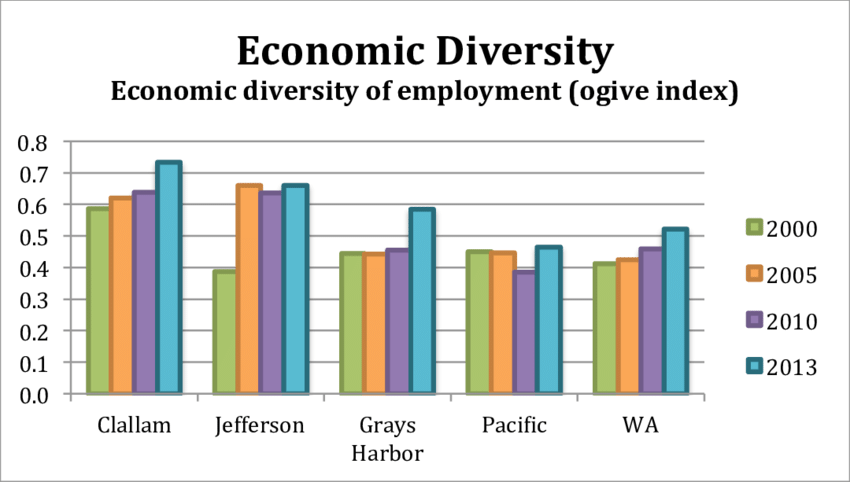
A place can look busy on paper—lots of companies, plenty of logos—and still be fragile. If most of those firms sell into the same end market, depend on the same two suppliers, or hire from one narrow talent pool, a single shock can ripple through everything.
Think in layers, not counts:
- Sector layer: Are revenues spread across unrelated sectors (e.g., healthcare, logistics, advanced manufacturing, tourism, professional services), or are they all “different flavors” of the same cycle?
- Firm-size layer: Do you have anchors, mid-market operators, and scrappy small businesses, or only one of the three?
- Demand layer: Are customers local, national, and export-oriented—or concentrated in one region or buyer?
- Talent layer: Are jobs available for different skill paths—apprenticeships, trades, community-college programs, university grads?
Two quick examples:
- Not diverse: Ten tech firms, all ad-driven, all hiring the same engineers from one metro. One ad slump → hiring freeze → broad local slowdown.
- Diverse: A port city with shipping, cold-chain logistics, fisheries, hospitality, boat repair, software for routing, and trade finance. One sector softens; others backfill.
That’s the real economic diversity definition in practice: balance across layers, not just a headcount of companies.
What are the Benefits of Economic Diversity?
A Diversified Economy is a key factor in ensuring the productivity of an economy. It is characterized by the presence of several different types of economic actors, and it can be found in both developed and developing countries.
The benefits of economic diversity include increased variety leads to better innovation, economies perform better when they have a range of small, moderately sized, and large businesses, economies that are more diverse are more likely to have greater risk-tolerance, and economic diversity stimulates competition which leads to lower prices for consumers.
There are many other benefits of economic diversity for the nation’s economy. It helps the economy by providing many workers to economic sectors and creates more assets for the country. This is because there is a wide range of opportunities when there are diverse sources of income.
In addition, this is one way that companies can make sure that they have a wide variety of skills within their workforce. It helps to grow GDP, increase productivity, and improve entrepreneurialism in a region. It also helps alleviate poverty, reduce income inequality and increase health outcomes.
The benefits of economic diversity are also found at the individual level through increased access to resources such as education and healthcare.
Socio-Economic Diversity Meaning (Why It Matters in the Real World)
Socio-economic diversity meaning isn’t a buzzword. It’s how you widen the base of participation so growth is shared and demand is durable.
Where it shows up:
- Hiring & pipelines: Apprenticeships, return-to-work programs, and partnerships with community colleges bring in workers who don’t follow the same path.
- Supplier development: Local procurement targets and mentorship help small firms graduate into bigger contracts, keeping more value in the region.
- Pay & progression: Clear bands, fair pay audits, and transparent promotion criteria move people through the system, not just into it.
Why employers care: Mixed backgrounds = mixed ideas. That’s how process improvements and new product angles actually show up on the shop floor or in sprint planning. It’s also how a diverse economy definition becomes visible inside a company, not just at the city level.
What is the Current US Index on Economic Diversity?
The current US index on economic diversity provides a nuanced understanding of the varied economic activities across different sectors and regions within the United States. This index is crucial for assessing the resilience and adaptability of the economy to global shifts, including changes in the global labor market. By analyzing the distribution of economic resources and employment opportunities, the index offers valuable insights into how diversified the US economy is, which is essential for predicting future economic stability and growth. This measure also helps stakeholders understand the interplay between domestic economic practices and global economic trends.
This index measures the percentage of workers in different occupational categories within a given county. The Index ranges from 0 to 100, with higher numbers signifying greater levels of economic diversity. In other words, counties with higher values have more variation in their occupations than counties in which fewer occupations exist.
The Index is also a set of indicators that measure socioeconomic diversity in the US by tracking changes over time. There are three primary variables: income inequality, poverty rate, and education level. This index allows us to keep tabs on how the US economy is adapting to changing trends in the workforce and population composition. Over time we can see how these trends have shaped this country physically, economically, and socially.
US Economic diversity is a report conducted by the Economic Policy Institute. The study found that there has been an unprecedented economic shift over the last few decades, with those at and near the top benefiting disproportionately from for-profit activity.
This has led to a significant increase in wage inequality, where lower pay is increasingly concentrated among a smaller number of individuals. This is due to changes in technology and globalization that have allowed multinational corporations to replace both large numbers of middle-class jobs and low-wage jobs with fewer low-wage jobs than high-wage ones (like office workers).
What is the Future of Economic Diversity?
The future of economic diversity is predicted to be more diverse than ever. By 2050, the US GDP will split into four different levels or classes – rich, middle class, lower class, and poor. The rich will comprise half of the total GDP, the middle-class will make up a third of it and the poor will be at 15%. This is due to automation and globalization that has led to an increase in jobs requiring no human interaction.
While this presents new opportunities for the upper-class and companies like Amazon who hire people for their fully automated warehouses, it creates a lot more inequality in society than we have seen so far. This is because the lower class will have to compete with machines.
Building Resilient Economies for Tomorrow (Playbook)
Here’s the practical side—how cities, regions, and employers make diverse economy gains that stick.
For public leaders
- Zoning & space: Protect light-industrial and logistics space near transport hubs; mix with office and flex so one use doesn’t crowd out others.
- Capital stack: Blend grants, loans, and guarantees to help mid-market and small manufacturers modernize—so they stay instead of relocate.
- Talent ladders: Fund short, stackable credentials tied to local employers. Reward completion that leads to wage gains.
- Export help: Support firms entering new markets (trade fairs, compliance coaching, translation) so demand broadens beyond local cycles.
For employers
- Supplier redundancy: Two sources minimum for key inputs, with at least one regional option.
- Workforce pipelines: Apprenticeships and on-the-job upskilling so you hire for slope, not just pedigree.
- Product mix: A “barbell” roadmap—core revenue that pays the bills plus a few small, experimental lines for future growth.
- Data habit: Track concentration risks—revenue by sector, by customer, by geography; headcount by role; skills in training vs. skills needed.
Score it simply: If any single customer, sector, or site accounts for >25% of jobs or revenue, you’ve got a concentration flag. Work the % down quarter by quarter.
The Case for a Truly Diverse Economy
Now that you know what is the definition of economic diversity, Economic diversity is the mix of industries and jobs in a region. A lack of geographical variation in any one component can cause major problems for communities down the line. One way to measure how economically diverse your city is? The unemployment rate measures what percentage of people looking for work aren’t able to find it.
We help you eliminate this problem by pinpointing exactly where there’s an opportunity with our customized service plan that aligns with your business goals. Sign-up with JobsPikr today.
See Economic Diversity in Your Market
Pinpoint sector concentration, spot resilient growth paths, and build a hiring/data plan that fits your goals.
Schedule a Demo today!
FAQ
1) What is economic diversity?
A balanced mix of industries, company sizes, markets, and skills so a region doesn’t depend on one pillar—that’s the plain economic diversity definition.
2) What is a diverse economy?
One that spreads risk across sectors, supports anchors + mid-market + small firms, and offers multiple career paths. In short: more ways to earn, hire, and grow.
3) How do places measure it?
With indices that look at employment and output by sector/occupation, plus context like income and education. Higher spread → higher resilience.
4) How does socio-economic diversity fit in?
It brings in people from different income and education backgrounds through fair pay, open pipelines, and supplier development. That widens demand and ideas.
5) What should an employer do first?
Three fast moves: map revenue concentration, add a second supplier for any critical input, and launch one skills pipeline (apprenticeship or certificate) tied to a real job.
6) What is the definition of a diverse economy?
A diverse economy definition focuses on the variety within a region or country’s economic landscape. It’s not simply about having a high number of businesses, but rather a mix of industries and the types of jobs they offer. This includes a range of sectors like manufacturing, agriculture, and services, along with businesses of various sizes. This variety creates a more stable and resilient economic system. Imagine a region heavily reliant on tourism. If travel restrictions are imposed, the entire economy suffers. However, a region with a mix of industries can weather such challenges better, as the strength of other sectors can help offset downturns in one specific area.
In conclusion, a diverse economy can be defined as a region or country’s economic landscape characterized by a variety of industries and the types of jobs offered. This includes a mix of sectors, business sizes, and ideally, a workforce with a wide range of backgrounds. This variety fosters stability, resilience, and innovation, creating a more adaptable and prosperous economic system.
